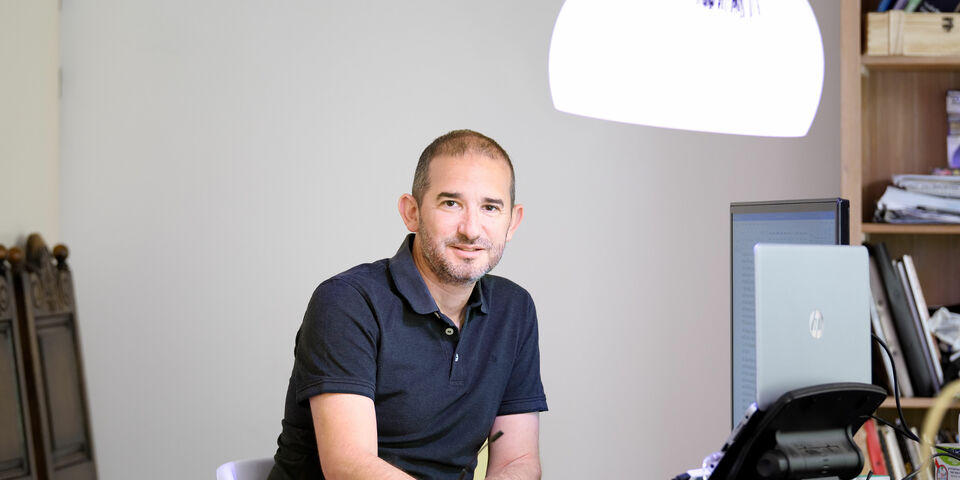The sound of silence
Students do not realize how much a teacher learns about the level of engagement or whether a concept has gone well with the students by observing their body language: students rarely turn on their cameras when they are on the receiving end of a live online lecture. Should we also switch our cameras off when we are teaching to illustrate to the students how impersonal teaching becomes when there is no visual contact between teacher and student?
I admit, also before we all got sent to our respective homes, I noticed the level of interaction in classrooms was far from ideal. The fantasy students most lecturers dream about, who ask clever questions and eagerly raise their hand to answer our questions, probably never existed. Or at least they have not chosen to come to study Electrical Engineering in Eindhoven. Or they did, but found my teaching style and approach so off-putting that they have decided it’s better to keep quiet.
We, the lecturers at TU/e, have all been concerned about the drop in the number of students showing up at lectures. The numbers for instruction lessons are even more dramatic, taking a nosedive after week 2 from which they never recover (aside from the one last lecture where the exam is to be discussed).
When we moved online, I was secretly hoping that the interaction would go up. I was also hoping to see more of my students online. After all, in the first weeks after the lockdown was announced, what else did the students have to do?
So much for my hopes. When I offered my first zoom lecture, way back in March when it was still allowed to use Zoom, about 90 students tuned in. A promising start, you might say. But as most of us have learned in the past months, online presentations are not the same as lectures given in a classroom. Sitting at home talking about course material is weird enough, but doing this without seeing any students was really upsetting.
Students may think that we are used to them being passive in lectures. “What does it matter to the teacher if he can see me or not?” is a likely question that students may pose. However, students do not realize how much a teacher learns about the level of engagement or whether a concept has gone well with the students by observing their body language. Seeing a student physically scratching their heads (yes, you are actually doing this when you are thinking or confused) or gazing aimlessly at the board or at me, is a great sign that I need to repeat something. That I need to slow down and try to solve a problem that illustrates the concept.
However, students rarely turn on their cameras when they are on the receiving end of a live online lecture. Why is that? What needs to happen in order to change this situation? Should we make it mandatory? Should we also switch our cameras off when we are teaching to illustrate to the students how impersonal teaching becomes when there is no visual contact between teacher and student?
As for the interaction; I had high hopes from technology. Raising you hand in a physical classroom and taking the chance that your question will be severely off the mark, is understandably a high risk. But what is the risk in sending your questions via the chat function as a private message to the teacher? If I don’t have a visual clue to how students are doing, at least I can hope they will approach me more freely with questions.
The fourth quarter of the academic year 2019/2020 will end soon and after the summer break we will perhaps partially go back to the lecture room, but most likely there will be a lot of studying happening online. Could we maybe agree that students turn on their cameras when tuning in for a lecture? And in case live streams are captured and made available online, can we figure out how to do this while not violating their privacy?


Discussion